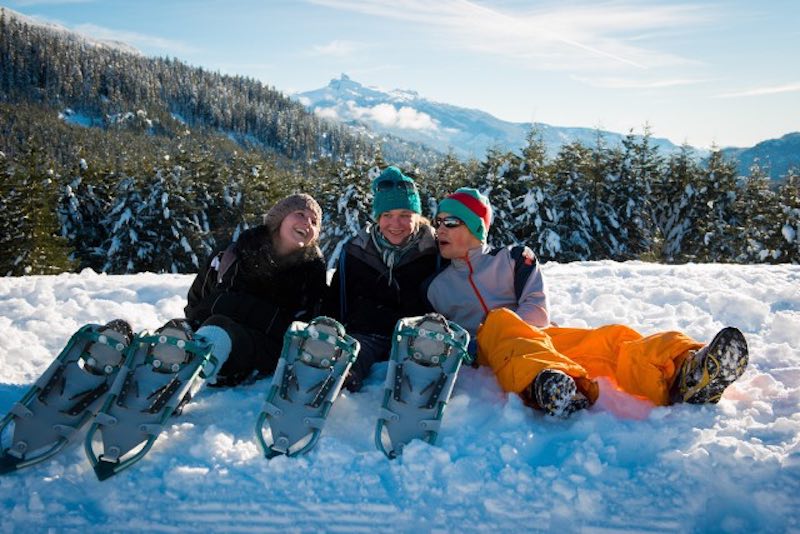Though skiing may be Whistler’s most popular activity, snowshoeing is also fantastic there. I’ll provide information and directions for 8 distinct trails in my Whistler snowshoeing guide, including Whistler Olympic Park, Cheakamus Lake, Lost Lake Park, Joffre Lake, and more.
Snowshoeing Is Such A Great Winter Activity
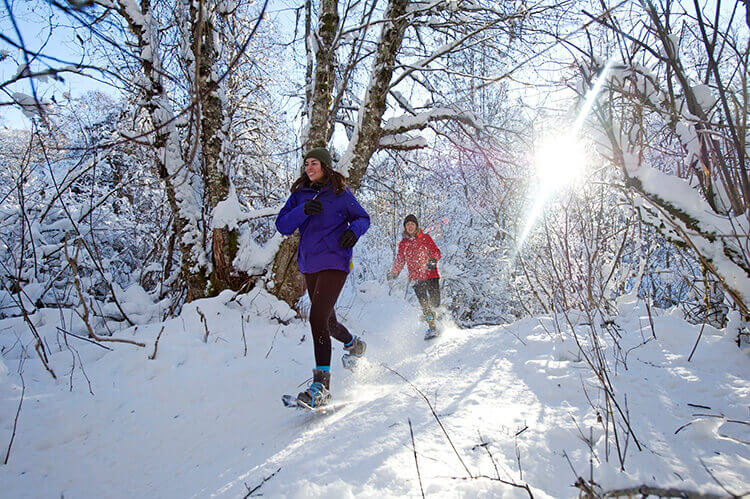
It is now regarded as a new winter activity because it can be enjoyed by practically everyone, including both adults and children. Basically, you’ll use a snowshoe with a propeller-like form to walk on the snow. This helps the snowshoe hold onto the snow firmly. For improved balance, you can also use a climbing stick in conjunction with it.
These propellers are becoming lighter and smaller today thanks to the use of aluminum and plastic components. They are simple to connect to any winter boot, and the metal serrations underneath provide them better traction on the snow.
Tips To Snowshoeing In Whistler
- Plan your trip: These trails may be close to crowded ski resorts, but they provide access to real wilderness. Inform someone of your destination and anticipated return time.
- Check the avalanche forecast, trail conditions, and weather: Don’t go if the forecast calls for bad weather or poor trail conditions. If the prediction is not labeled “Low” or “Moderate,” you probably shouldn’t venture outside unless you have taken an avalanche safety course.
- Put on winter gear and bring only the necessities: Pack items to have on hand in case of emergencies.
- Use safe snowshoeing techniques: Snowshoes prevent you from sinking into deep snow, but they aren’t perfect for walking downhill or sideways as you run the risk of slipping and getting hurt. In order to better grasp the frozen snow, they are also wearing crampons and other traction devices.
- Take an avalanche safety course: If you intend to venture off of the flat ground, you must be trained in avalanche safety.
Best Places To Snowshoeing In Whistler
Brandywine Falls
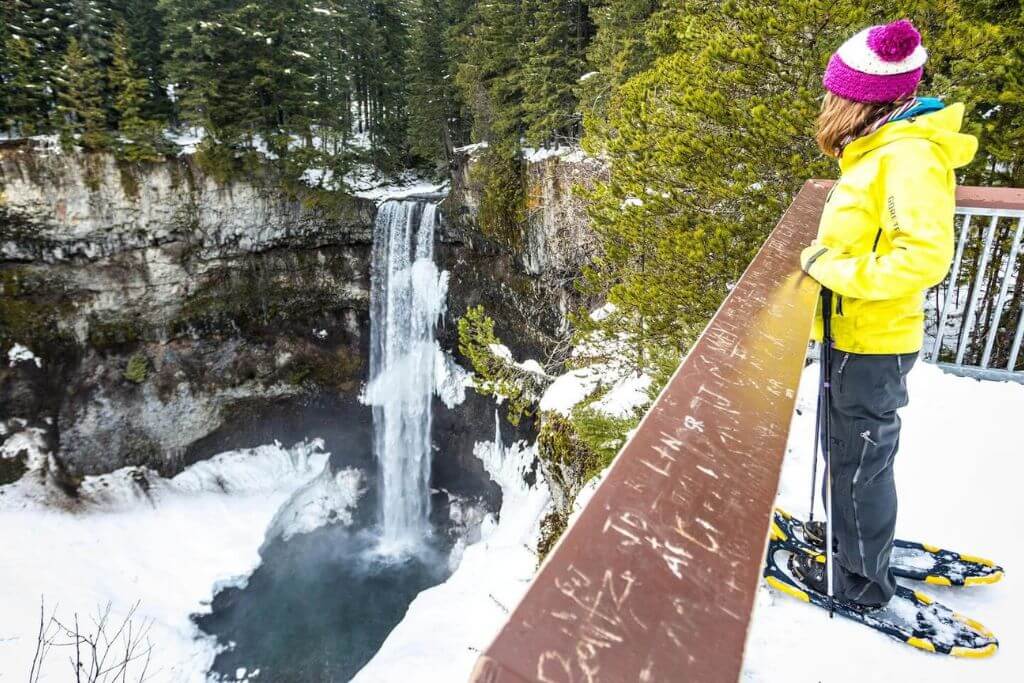
For snowshoeing near Whistler, the flat and simple walk to the Brandywine Falls viewing platform is fantastic. You may snowshoe part of the Sea to Sky trail across to the Whistler Bungee Bridge if you want to extend your journey. You can observe people bungee jumping while gazing down into the Cheakamus River canyon’s depths.
Exercise caution as the trail crosses railroad tracks. There is no maintained track that leads to the base of Brandywine Falls; instead, one must take an unauthorized path that crosses treacherous rocks and a precipice while using a spooky old rope. This path is particularly hazardous in the winter because it is extremely icy.
Unfortunately, parking on the side of Highway 99 is not permitted during the winter months when the park entrance is locked. Unfortunately, the only way to take this snowshoe trek right now is to park at Whistler Bungee on the Cal-Cheak Forest Service Road and walk in from there unless you get dropped off and collected up. The road is plowed by Whistler Bungee, but it is tough.
Snowshoeing at Whistler Olympic Park
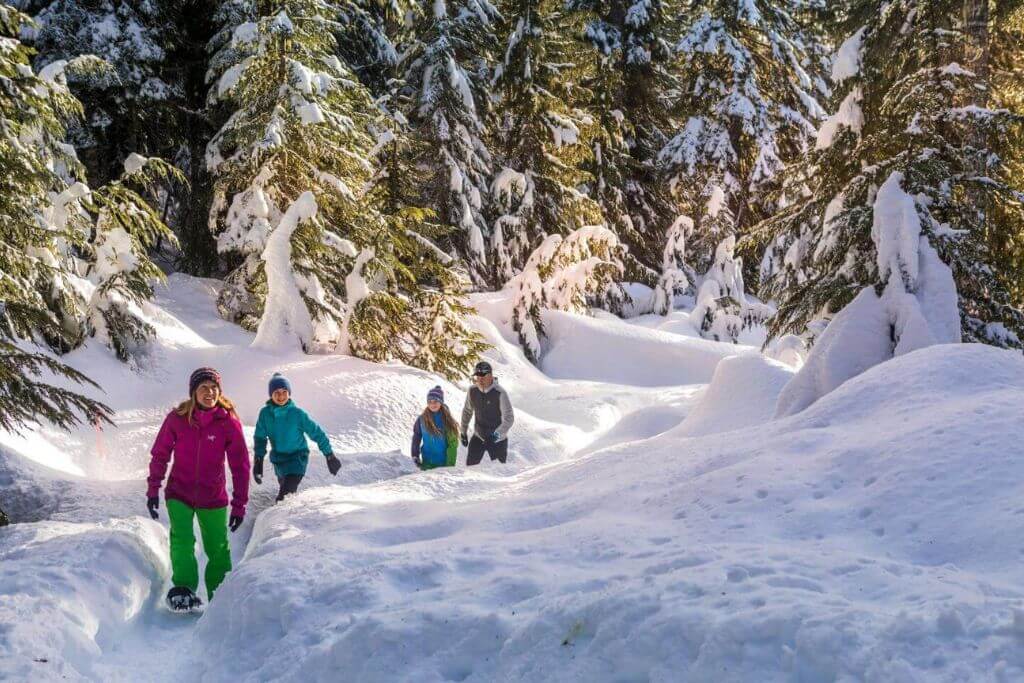
Whistler Olympic Park and Ski Callaghan are two separate cross-country skiing venues in the Callaghan Valley. However, there is only one trail pass pricing for each. Although it is primarily a cross-country ski area, over 35km of snowshoe routes range from extremely flat to more challenging. Alexander Falls, which is 43 meters high and looks amazing when frozen, is the area’s main attraction. Snowshoes can be used to reach the base in Whistler Olympic Park.
The majority of the park’s paths are on level or rolling terrain. However, some pathways cross more abrasive, avalanche-prone hills. If the situation doesn’t make the paths safe, the park may close them. Whistler Olympic Park has a number of backcountry entry sites. There are no path marks once you enter the wilderness, and the terrain is very prone to avalanches. Cross-country skiers and hikers use several of the same pathways. Don’t stray from the trail’s edge or step into the designated ski path.
There are plenty of parking spaces available. The primary ones are close to the Callaghan Country base and the day lodge at Whistler Olympic Park. Depending on the trails you intend to snowshoe, choose your parking location.
Snowshoeing to Whistler Train Wreck

This small track is one of Whistler’s top walks, making it a fantastic area to go snowshoeing in the winter. To cross the Cheakamus River on a brand-new suspension bridge, the trail progressively drops. On the opposite side, there are several abandoned mountain bike jumps and seven box cars covered in graffiti. Where you started up the hill is where the primary 5 are. The other two are to the left and a little further down the trail.
No risk of an avalanche. Make sure to adhere to the guidelines in the trail guide, which is linked below. Some outdated trail guides are still available online, and they reach the train crash through an antiquated (and illegal!) method. The traditional method entails trespassing on some railroad tracks.
At the trailhead in Whistler’s Cheakamus Crossing neighborhood, there is free parking in a tiny lot. Public transportation is accessible to the path within a 10-minute walk. Take bus 20 to Legacy Way from Whistler Village, then walk 700 meters to the trailhead along Jane Lakes Road.
Related post Top 7 Easy Hiking Trails In Whistler For Newbies
Snowshoeing the Cheakamus River Trails
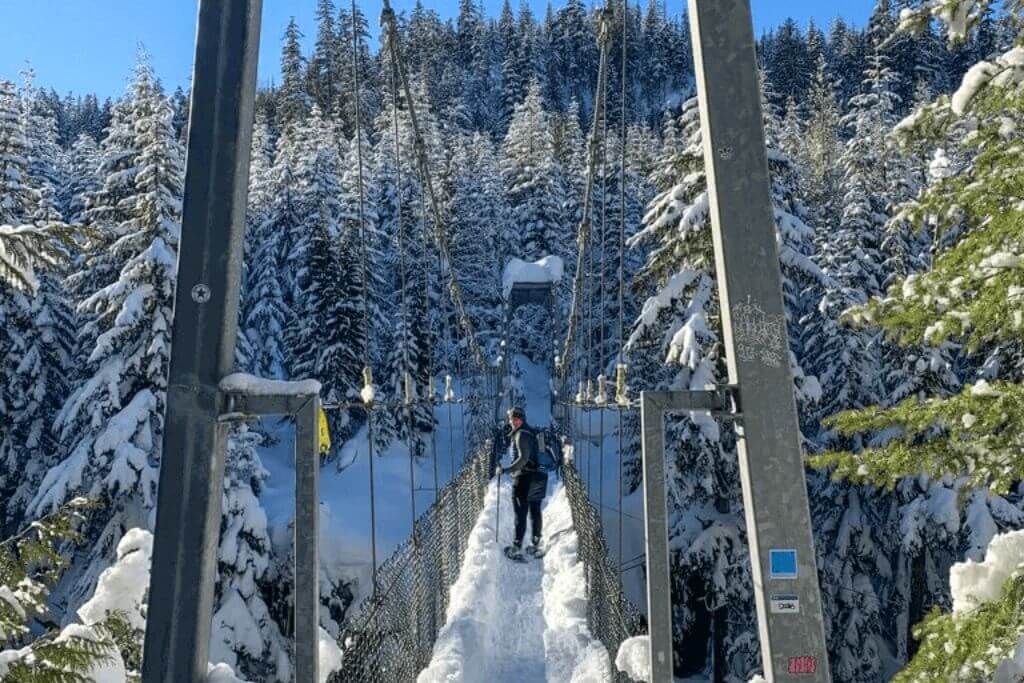
An excellent area to enjoy snowshoeing in Whistler is the Whistler Interpretive Forest, located in the Cheakamus Crossing neighborhood. By using the Farside Trail on one side of the Cheakamus River and the Riverside Trail on the other, you can complete a loop. The two are connected by a stroll across a lovely suspension bridge. A few little undulating hills dot the course, but none are particularly severe.
Just after you exit the highway, park in the Whistler Interpretive Forest Parking Lot on Cheakamus Lake Road.
Cheakamus Lake Snowshoeing
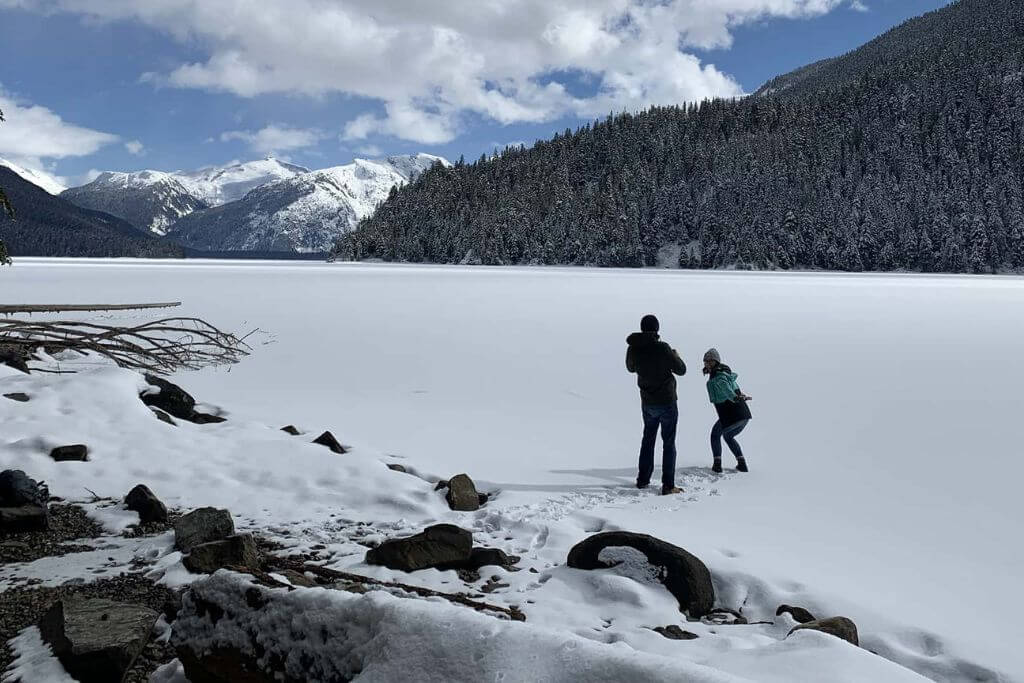
Summertime is a good season to take a quick stroll to Cheakamus Lake. Since the usual access route is closed in the winter, the trip takes substantially longer. To get to the summer parking lot, you must first snowshoe 7.5 km along the restricted road. Following the summer trail takes you another 3 km to reach Cheakamus Lake from there. You can walk another 4 kilometers down the shore until you reach the lake. If you don’t want to travel all the way to Cheakamus Lake, there are a few shorter loop paths that branch off the road, like the Crater View Trail.
There are no risks on the trip’s road segment. You will have to traverse a sizable rock avalanche and a steep slope as soon as you begin the trek from the summer parking area for Cheakamus Lake. This slope poses a risk of avalanches. Cross with caution and one at a time. If the circumstances aren’t right, be ready to turn around.
Public transportation is accessible to the path within a 5-minute walk. Take bus 20 from Whistler Village to the first stop in Cheakamus Crossing, and then go 350 meters to the trailhead.
Snowshoeing at Lost Lake Park
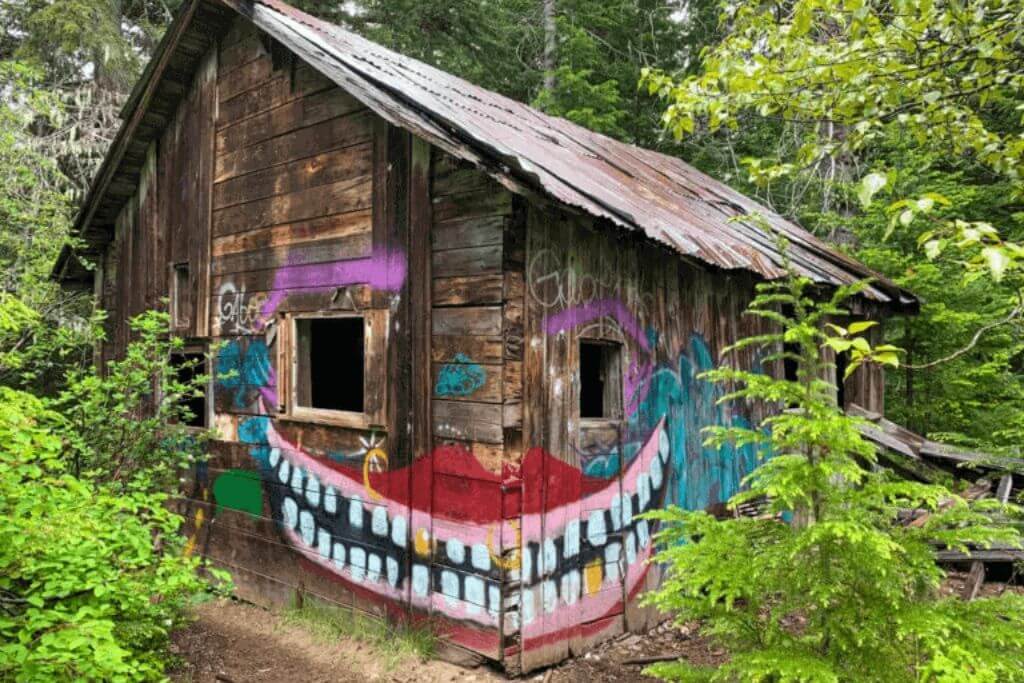
There is 15 km of snowshoe paths in Lost Lake Park, which is most renowned for its cross-country ski tracks. The ski paths occasionally cross these undulating trails as they travel through the forest near Lost Lake. Views of Lost Lake or Green Lake can be seen if you ascend some of the hillier routes. There is a day lodge with a cafe and a warming cabin if you need rest in Lost Lake Park.
No risk of an avalanche. Cross-country ski tracks can occasionally cross the trails. Track approaching skiers. Keep to the side of the trail as you cautiously cross the established ski track.
In Whistler Village, Lot 5 is the nearest parking area. Take bus number 5 to the intersection of Blackcomb Way and Lorimer Road and then walk five minutes down Lorimer to reach Lost Lake Park’s entrance.
Snowshoeing to Parkhurst Ghost Town
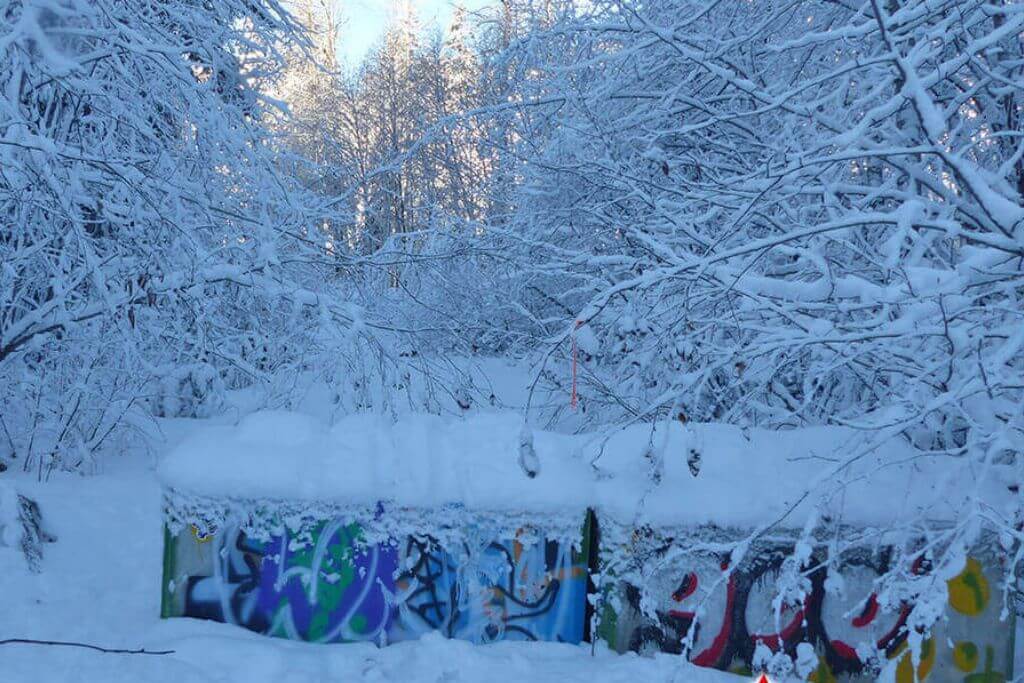
The free snowshoe trek to the former town of Parkhurst was designed for you if you enjoy abandoned structures and feel confident exploring unmarked routes in Whistler. The mountain bike tracks that make up the loop trip to the ghost town might be difficult to locate in the winter. Before Whistler became a ski resort, Parkhurst Ghost Town, a former logging town situated on the banks of Green Lake, was abandoned in the 1960s. In the area, there are several abandoned vehicles and structures. The only remaining building that is coated in graffiti is the main attraction.
No risk of an avalanche. It can be simple to get lost because some of the routes and junctions are not adequately signposted. In the winter, it is difficult to see the marks. I advise utilizing a GPS program like Gaia, Alltrails, or Trailforks that displays trails. Just in case, bring a map and compass.
The signposted turnoff for the Wedgemount Lake Trail is located 10 minutes drive north of the village on highway 99. Off the highway, turn right and proceed to cross a bridge and some train tracks. Right after the bridge, park along the side of the road. Typically, there will be too much snow for a vehicle to travel all the way to the trailhead, as I explain in my trail guide. Your hike will be extended by 1 km each way by walking the road.
Joffre Lake
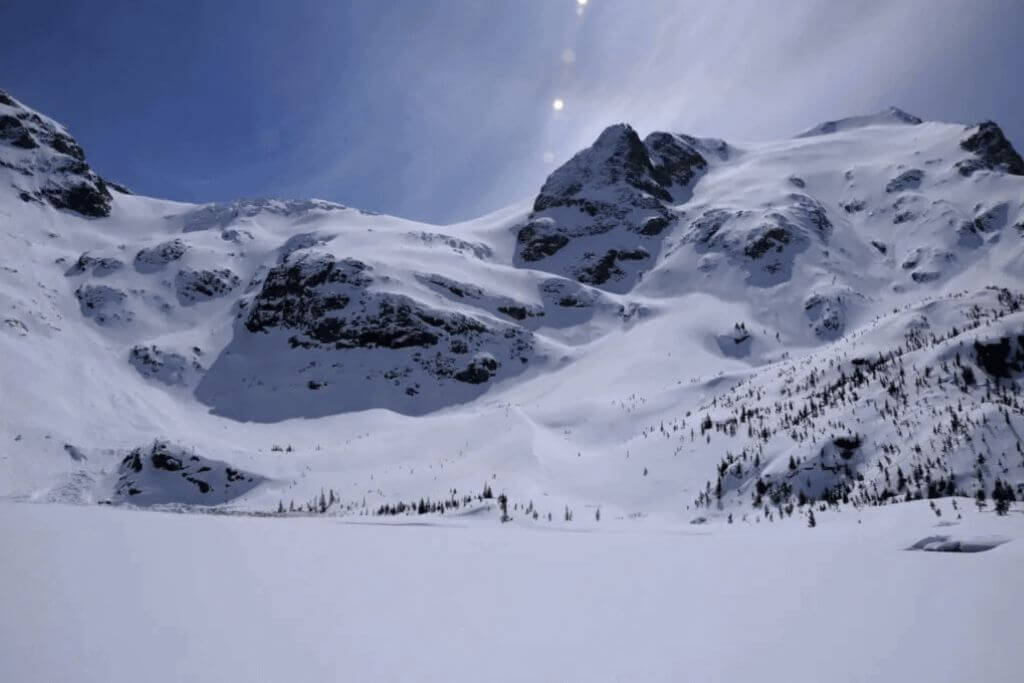
Before reaching a third alpine lake with a fantastic perspective of the surrounding glaciers, this well-traveled trail passes via two alpine lakes. While the turquoise blue lakes are the main attraction in the summer, Joffre Lake is completely covered in snow during the winter. Beginners may reach the first lake from the car in just 5 minutes. The remaining lakes, however, require more skill and should only be attempted by seasoned snowshoers. Snowshoeing in Joffre Lake on a day trip is completely free. However, camping overnight costs money.
It’s rough terrain in the backwoods. There is no mobile service, and you are a long way from aid in Joffre Lake. Particularly between the second and third lakes and at the far end of the third lake, the trail passes beneath some avalanche terrain. If you intend to hike this trail, you should be prepared with avalanche equipment and training.
Drive through Pemberton and Mount Currie for an hour to reach Joffre Lakes Provincial Park from Whistler. Even though the entire drive is on asphalt route 99, it is a very steep mountain road with several switchbacks that can be treacherous in the winter due to ice and snow. In case, bring tire chains.
There is a sizable parking lot in the summer at Joffre Lake, but only a portion of it is plowed in the winter. Additionally, sometimes it isn’t even plowed. Bring a snow shovel in case you need to dig yourself a parking space and try to park such that you won’t obstruct the plow. Make sure you get there early to ensure a spot.
10 Most Exciting Activities In Whistler Are Waiting For You To Experience
